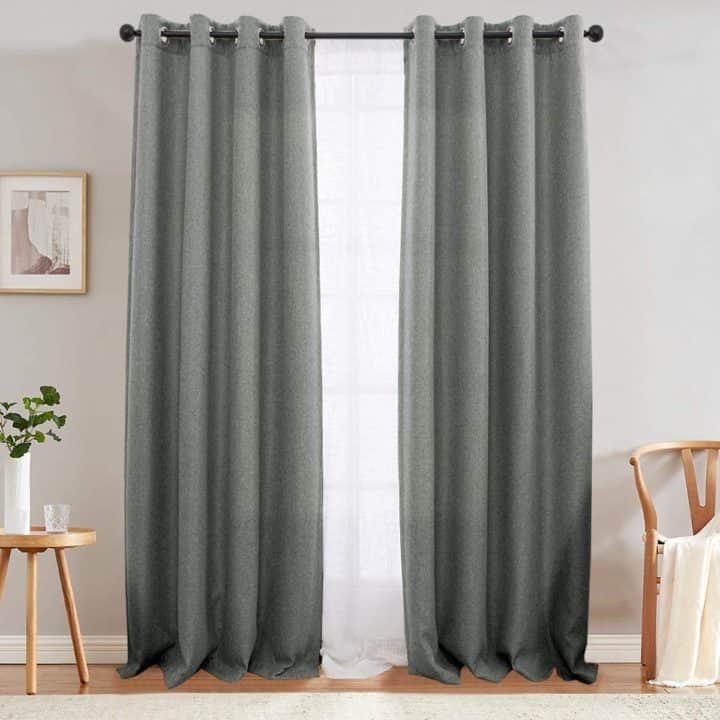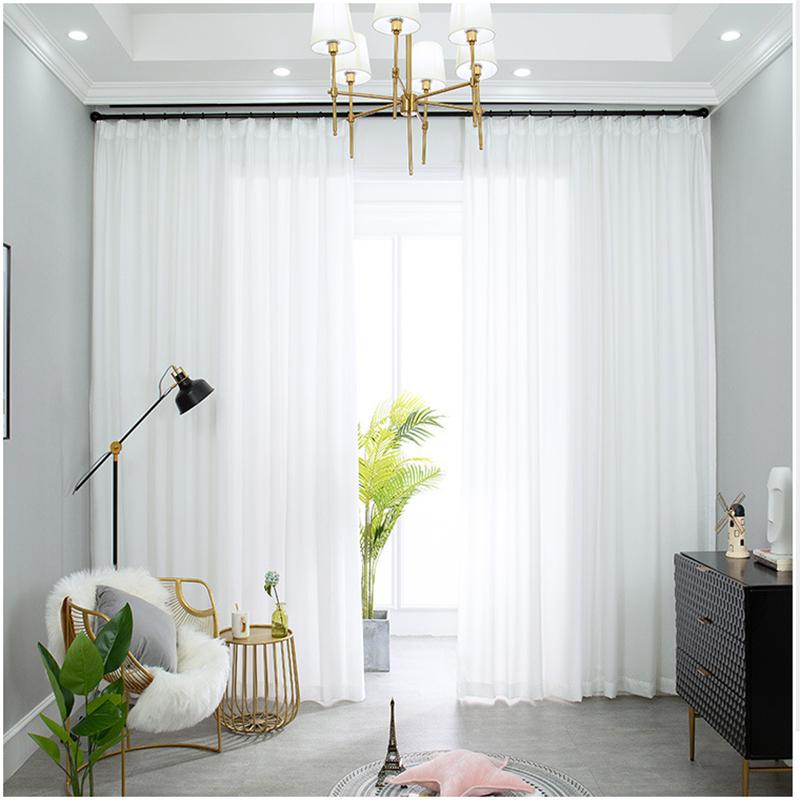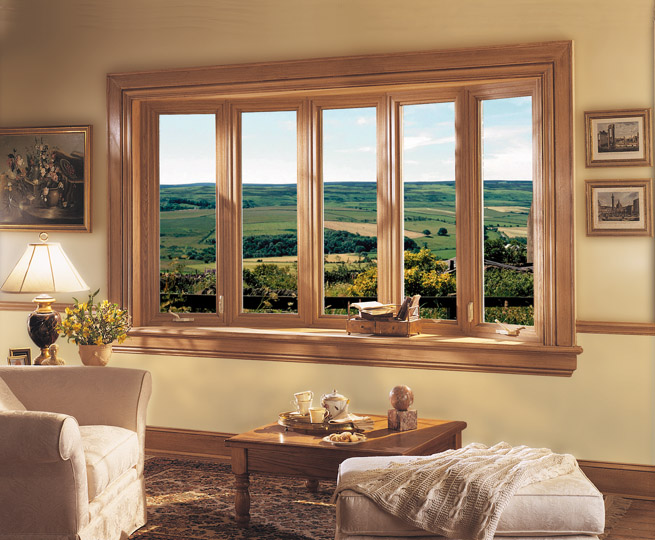Curtains feature various styles, materials, and sizes, making finding the perfect fit for your needs challenging. Although you can experiment with patterns, fabrics, and texture, getting the right length suitable for your house design is critical. Modern homes mostly feature high-ceiling constructions, reaching up to 9 feet. So, how long should your curtain be for a 9-foot ceiling?
You require 96-inch curtains for a 9-foot ceiling, with the typical curtain rod hanging around a foot from the ceiling. The 96-inch length goes from your floor up to the mark one foot from the ceiling. You can also go up a size to 108-inch panels when you want your curtains to pool on your floor or intend to hang them at ceiling height.
This piece covers different curtain placement and size aspects to ensure you select the appropriate length and style for your home’s architecture. Consider the following factors to help you upgrade your curtain installation and interior décor skills.
Hanging Style
The standard hanging style requires you to place the curtain rod around a foot from your ceiling. You can go higher or even hang your curtains to the ceiling, helping your walls appear taller. However, it is never advisable to put the curtain too close to your window frame. When the fabric crowds the frame, it leaves much space between the window and ceiling. HomeBlisHQ offers advice on how to hang curtains.
As a result, the placement appears strange and off-centered in many rooms. Additionally, your room can look smaller4 and cramped because lower curtains typically make the ceiling seem lower. You always want to avoid hanging the curtain lower than 3 inches above your window frame.
Notably, a good rule of thumb for getting an ideal placement is splitting the difference. For instance, you can hang the curtains in the middle when you have 2 feet of space over your window. This installation creates a pleasing and balanced appearance since you have one foot above your window and another below the ceiling.
Generally, curtains always touch or very nearly touch the floor because shortened panels present a discordant visual. You want your curtains long and flowing to the ground, linking the space between your wall and floor. Hence, your décor looks unappealing when the fabrics do not serve this purpose by stopping abruptly.
Some people prefer longer curtains, where the excess fabric pools on their floor. On the other hand, others like floating curtains that deliver a cleaner and more orderly appearance. Below are some styles you can incorporate when choosing a ceiling-to-floor hanging style:
1. Puddled Curtains
You can use this placement style if you enjoy flair and embellishments. Like breaking curtains, your materials extend past the floor line. However, they do so in excess to form pools of at least six inches of fabric on your ground. The fabric puddles create intensity and drama in decorating, perfect for an ornate area. Using this hanging method in out-of-the-way spots is advisable since kids can easily step on the materials. Notably, the biggest disadvantage is that the fabric quickly gets dirty pooled on the floor.

2. Breaking Curtains
Unlike the grazing curtains, this style offers a more relaxed design. This hanging style leads to your curtains slightly gathering on the ground. You have an excessive inch or two, providing sufficient fabric to fold slightly with uneven hemline on your floor. Nonetheless, this style’s con is that the contact with the floor means your curtains get dirty faster. Hence, it is best to get machine-washable curtains to enhance cleaning convenience.
3. Grazing Curtains
Grazing curtains is a method requiring precision, making it the most challenging to achieve. In this case, your curtains exactly reach the floor. For this reason, it is imperative to measure and hang your curtains to match the correct height accurately. If your measurement is slightly too far over, you end up with breaking curtains. On the other hand, you achieve floating curtains when it is slightly short.
4. Floating Curtains
This placement leaves the curtains stopping around a half-inch over your floor line. It is best to utilize this hanging style in high-traffic places. The detachment from the ground means you have no concerns about the fabric getting underfoot. Furthermore, it makes cleaning more comfortable because you do not need to push the material around to sweep or vacuum. It is suitable for cozy and casual rooms since it is a less formal hanging style.

Using Short Curtains
Even though you want long curtains decorating your walls, it is essential to note the different circumstances when shorter ones are necessary. You can use shorter curtains in specific rooms where the decreased length facilitates cleanliness and hygiene. For example, you can hang your curtains without touching the floor in a bathroom.
Besides this, you can place a shortened curtain for practicality in locations with objects blocking the longer types. For instance, if you have furniture, radiator, sink, or counter near the wall, it prevents a lengthy curtain from reaching the floor.
When using the shorter styles, it is best to select curtains designed to stop near the window frame, such as café curtains. Otherwise, the placement looks like a measuring mistake rather than a deliberate choice. Thus, it is better to avoid curtains that almost contact the floor but are four to five inches short.
Window Size

You can survey through different window sizes and styles as you decorate your house. A 9-foot ceiling means you can access unique selections such as bay windows or floor-to-ceiling windows. The most typical window size is 48 inches, although you can get as big as 60 inches high. Regardless of your preferred size, you want to weigh different elements to ensure you get the perfect window placement. These include:
I. Furniture
Builders generally leave approximately three feet of space between your window and floor, allowing you to place your furniture. Windows rarely go lower than three feet from the floor since they serve a functional purpose. It is not sensible to spend extra expenses on a larger window and block it with a sofa.
II. Header
It is vital to get the right-sized header, a functional space between the window and ceiling. The header supports the ceiling’s weight and is generally not less than 10 inches. Nevertheless, you can pay additional money and work with a structural engineer to modify this size according to your home needs.
III. Leftover Space
Once you account for the furniture placement and header, you can create a window to fit in the leftover space. A 9-foot wall leaves you with 6 feet after placing the window three feet from the floor. If you leave one foot for your header, you can construct a 60-inch window in the remaining 5-feet area.
Window Style
The window style you have determines the curtain type that best matches your décor. You can hang the curtains near the ceiling to conceal an unappealing window style effectively. In contrast, you can place the curtains within a frame with an intricate window design with ornate trim.
You can use an inside mount or tension rod for this installation method, enabling you to show off your window’s architectural features. You cover the trim when hanging the rods higher unless you keep your curtains open. As such, the higher placement hides a point of interest in your room’s décor.
Long Curtains On Short Windows
You can use long curtains over smaller windows, even when your window is not close to the ground. The lengthy fabrics help draw attention to the opening, making the window appear bigger. When you place the curtain near the 9-foot ceiling, it presents an illusion of a longer and higher wall. It is also best if the curtain reaches your floor since it draws the eye for the whole ceiling-to-floor length.
Apart from these, you can select curtains incorporating thin vertical stripes. You can also use curtain panels in lighter shades than your wall color while avoiding darker tones. In addition, picking lightweight or sheer fabrics adds an interesting appearance and the illusion of a bigger and brighter window.

